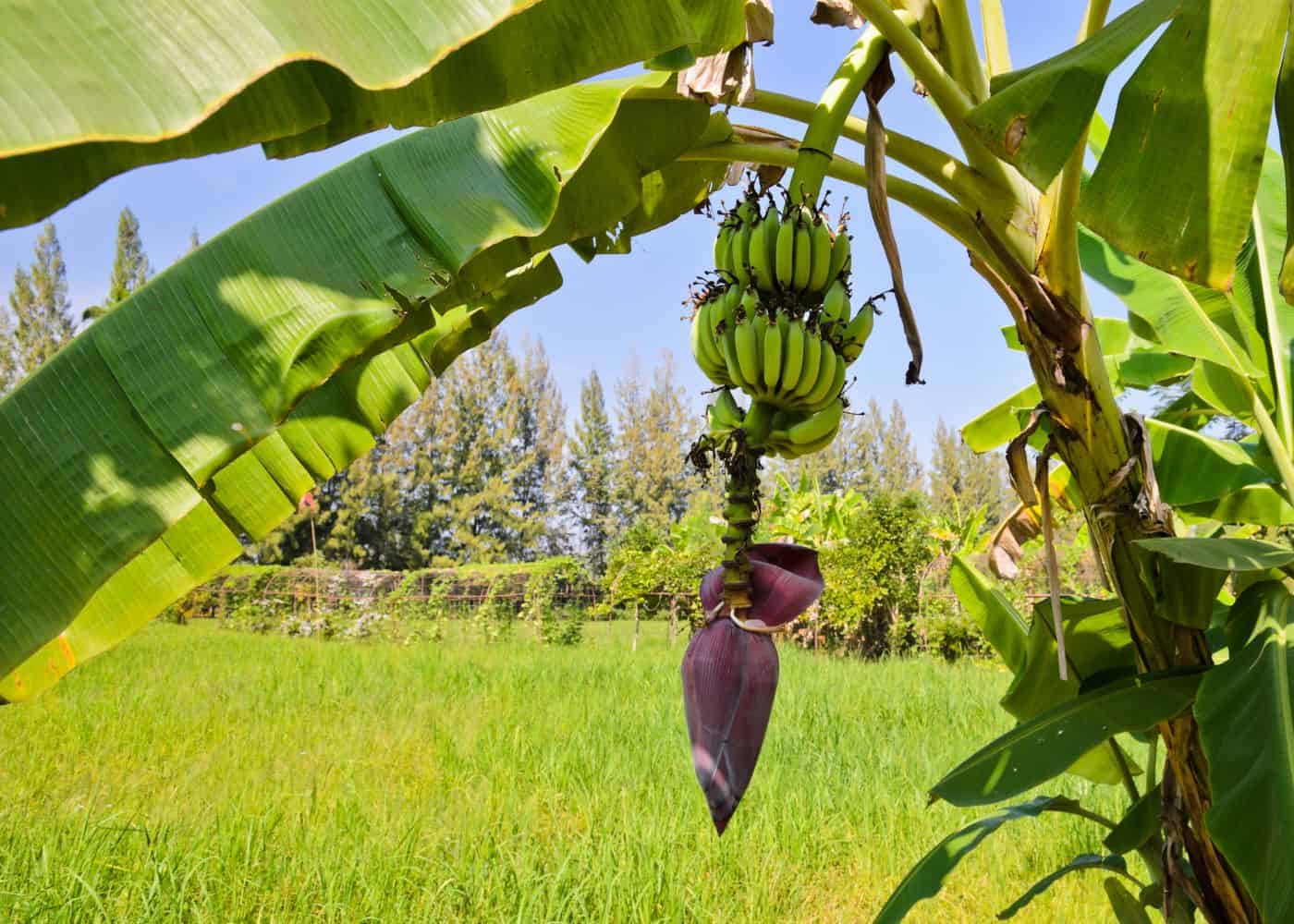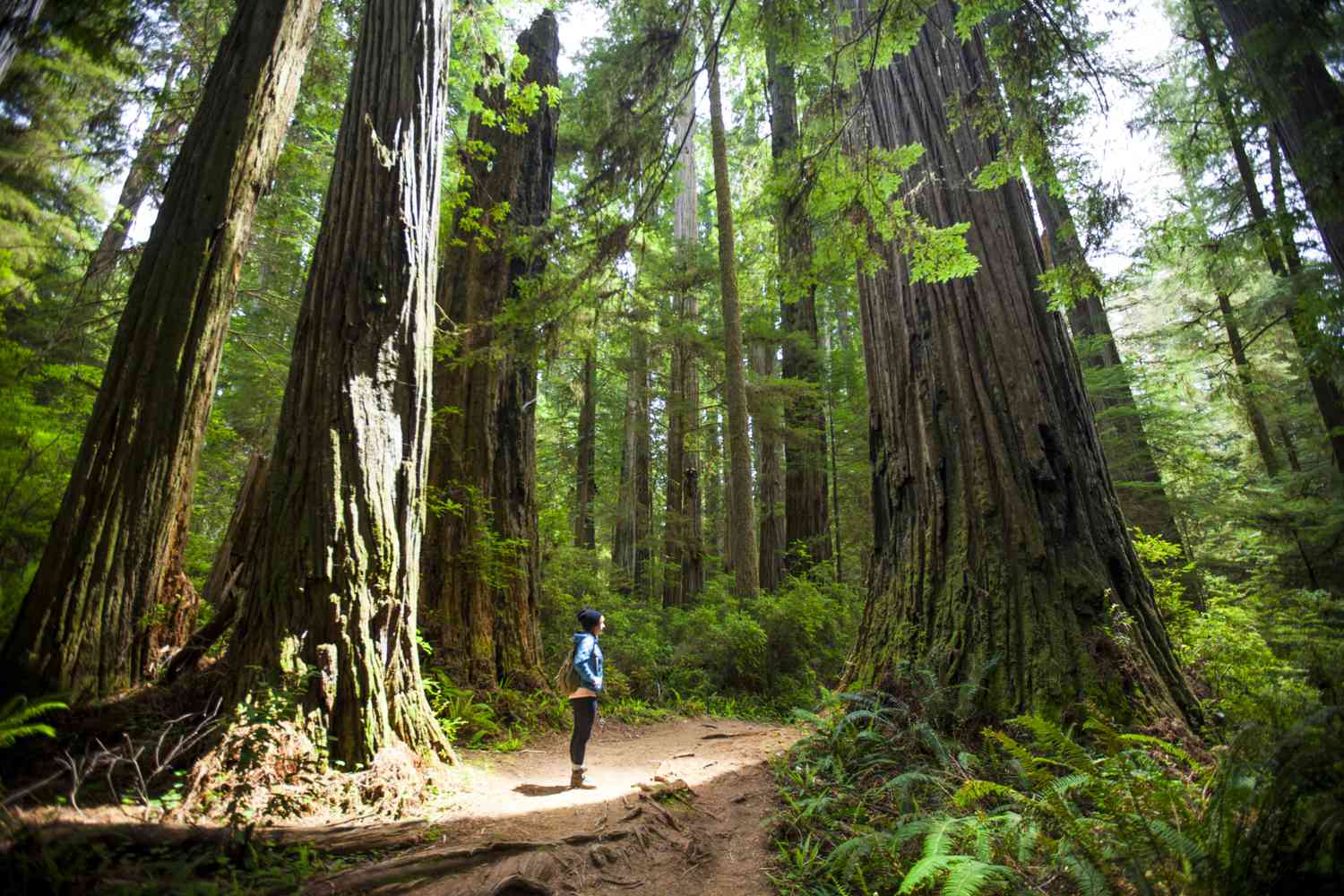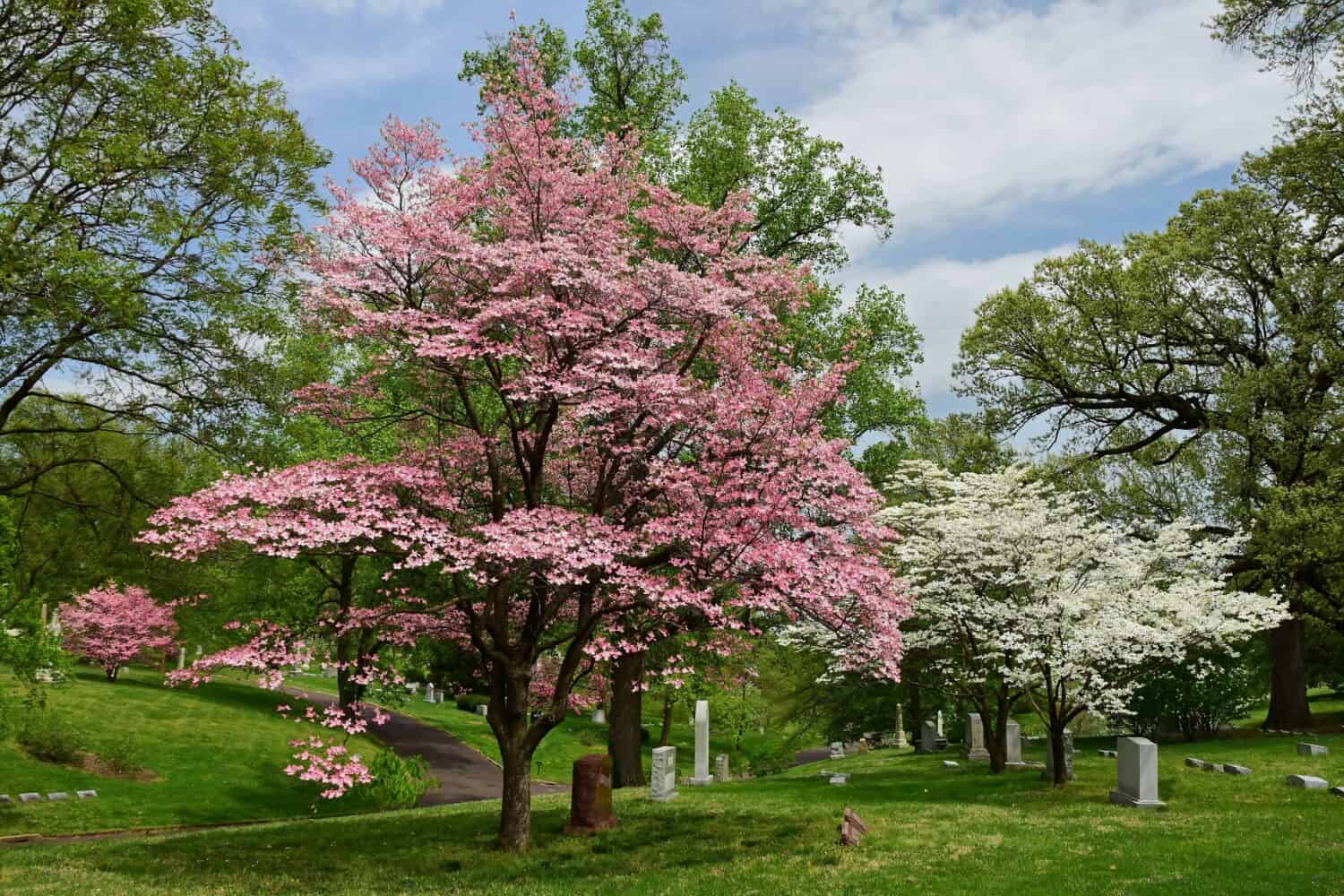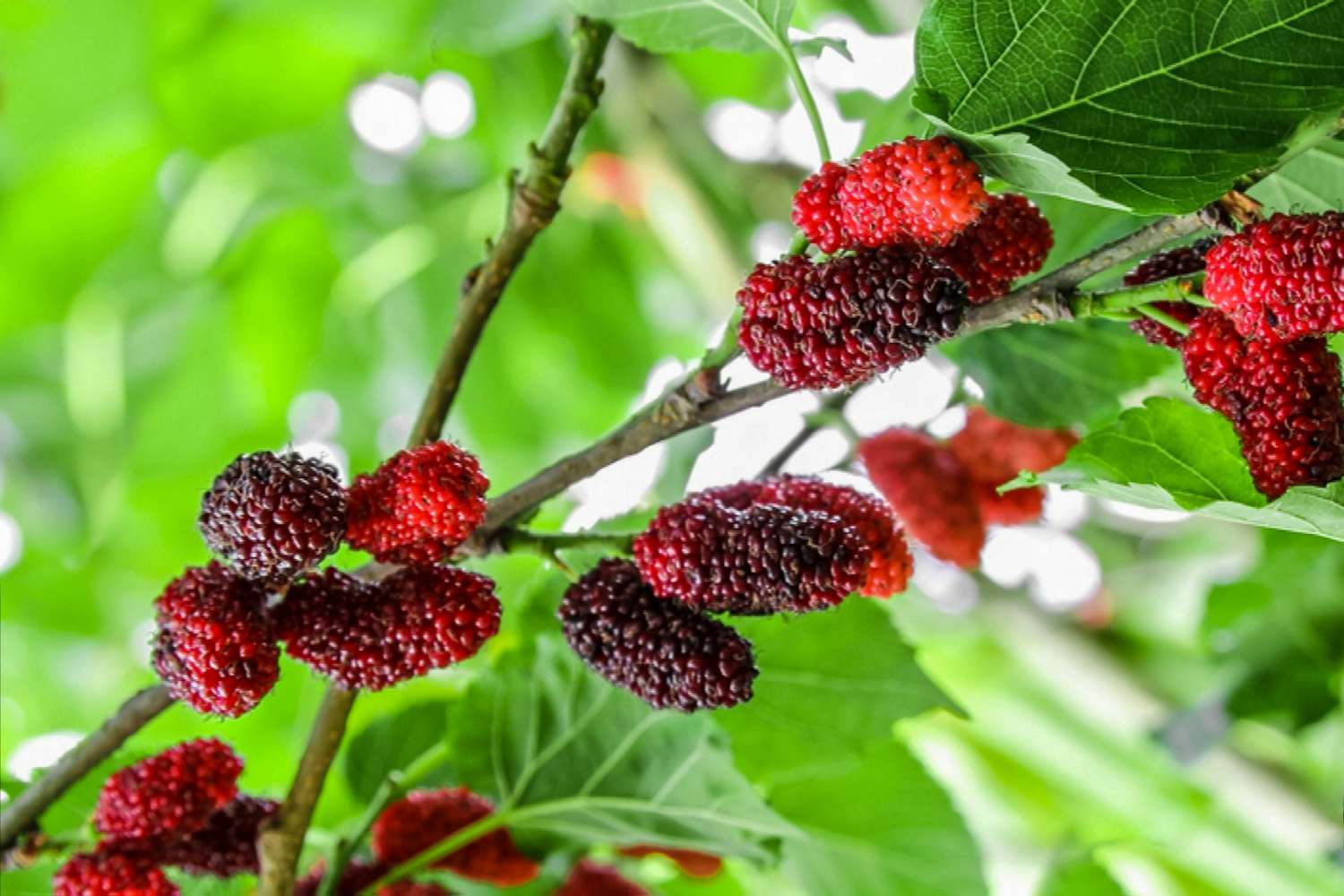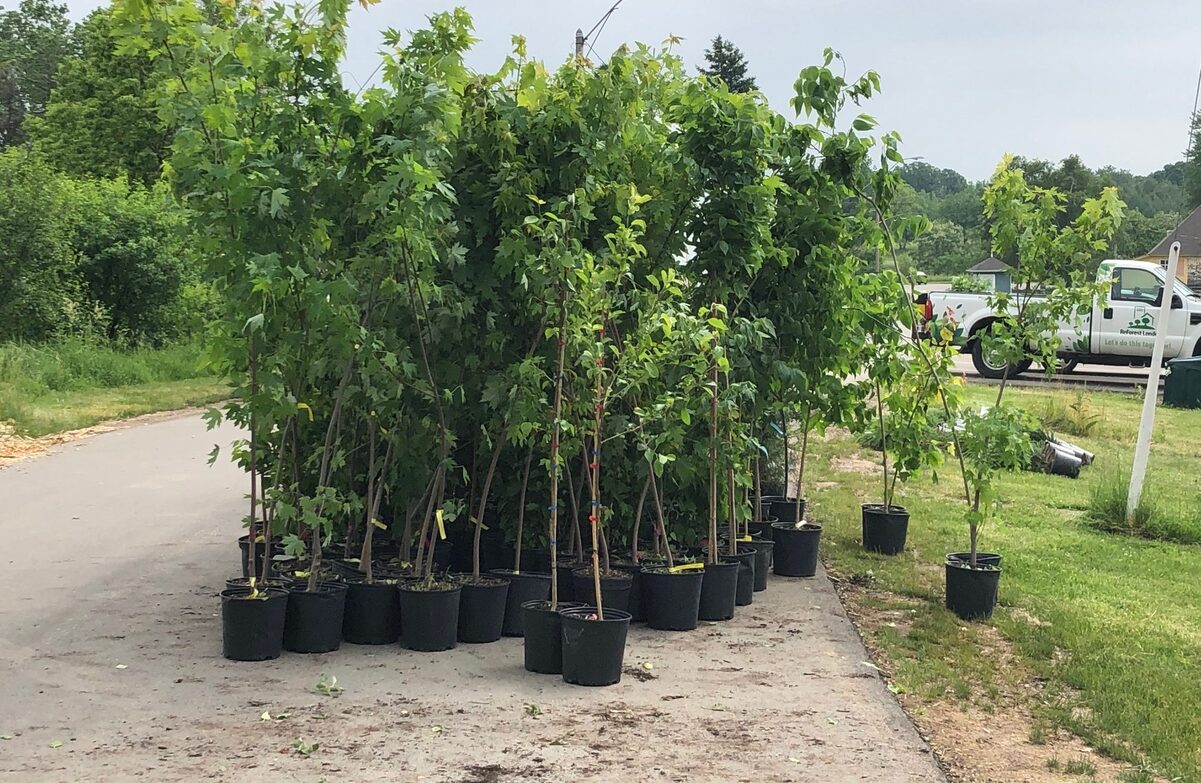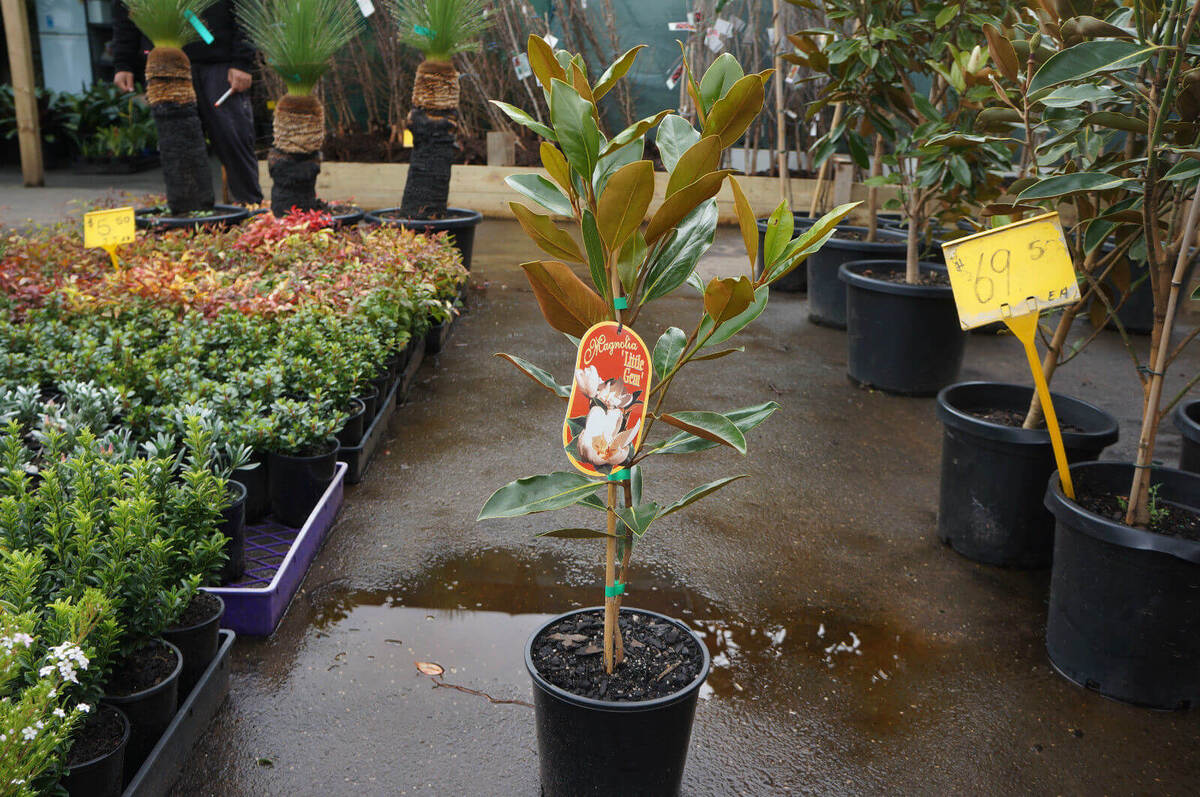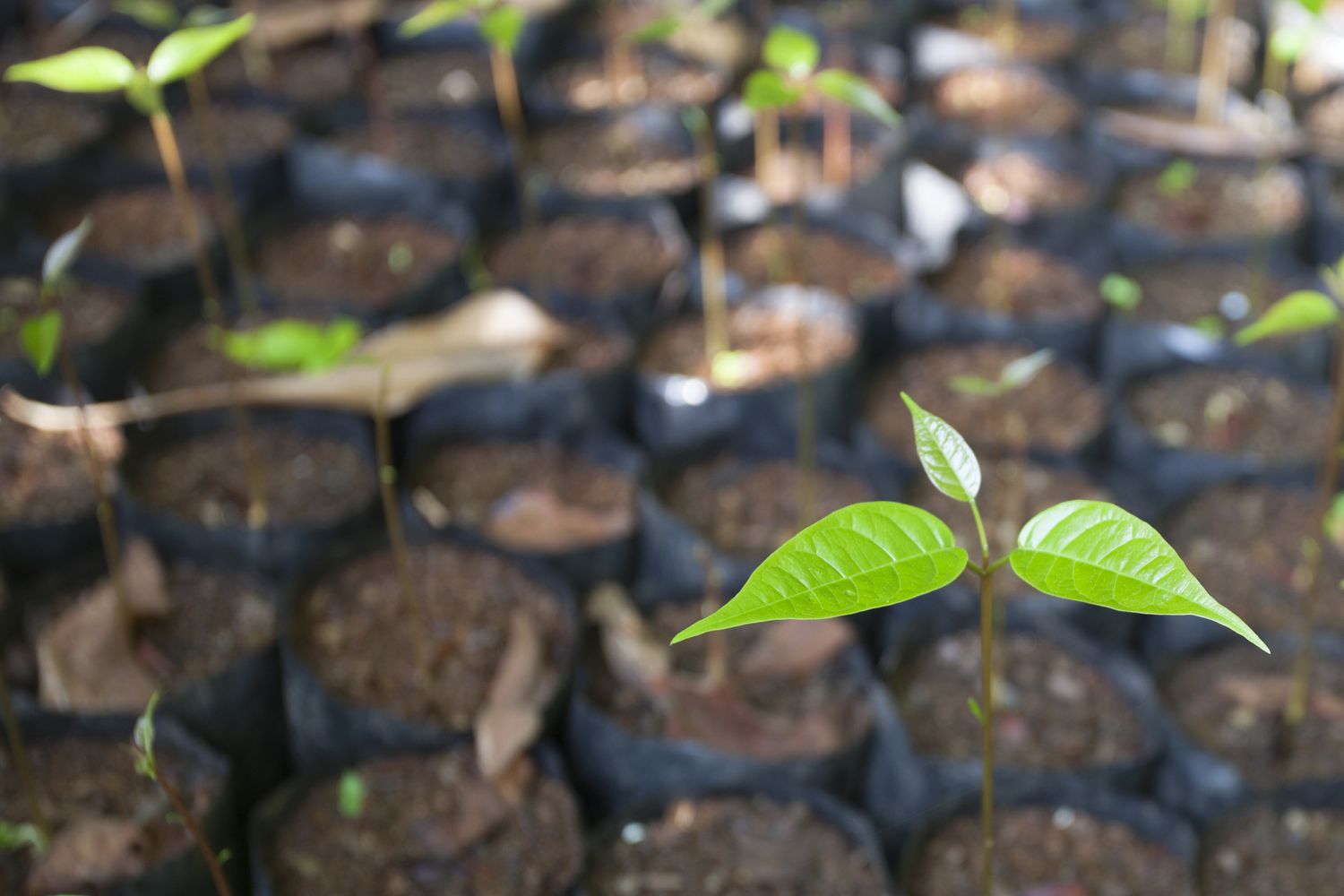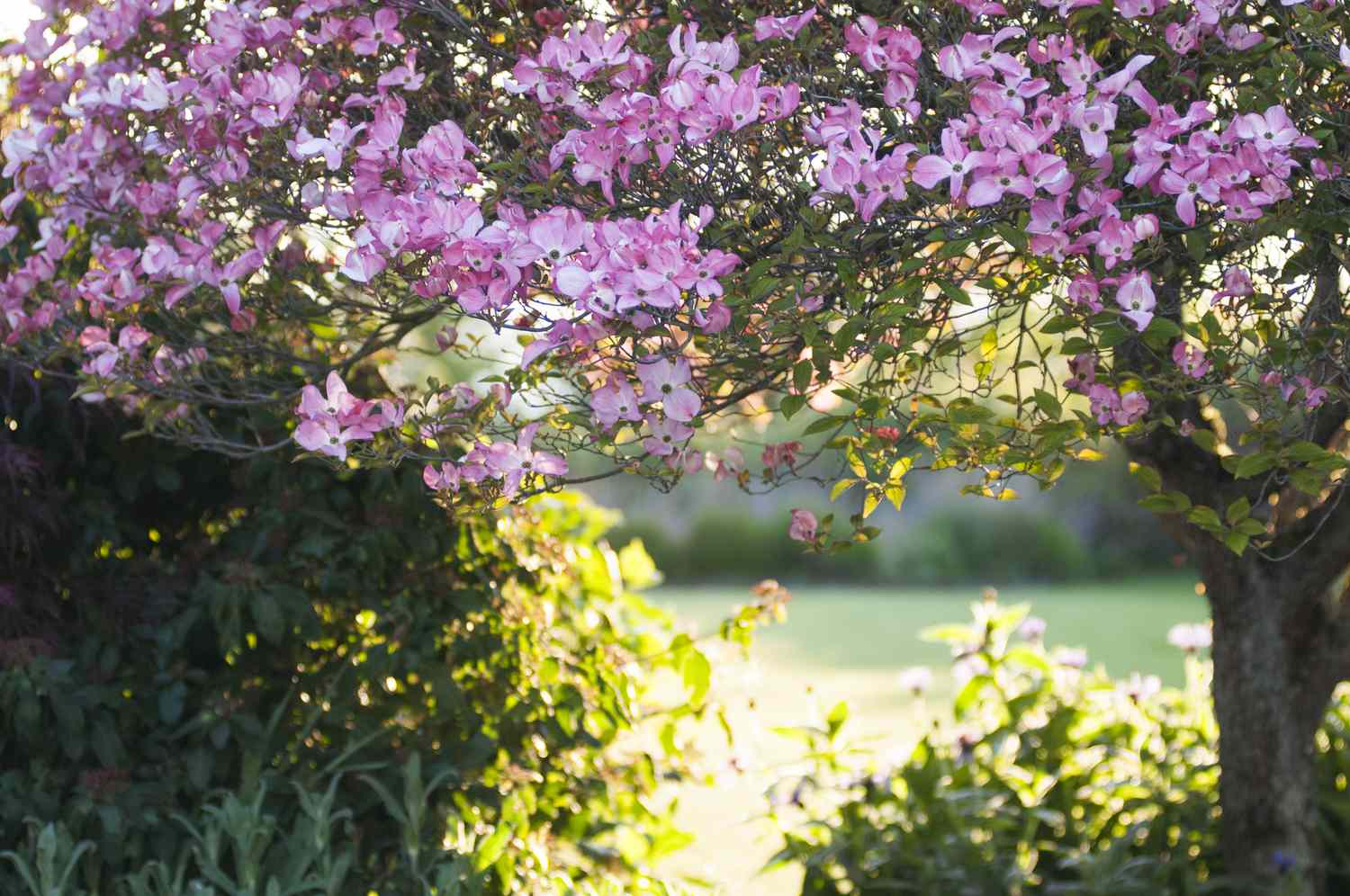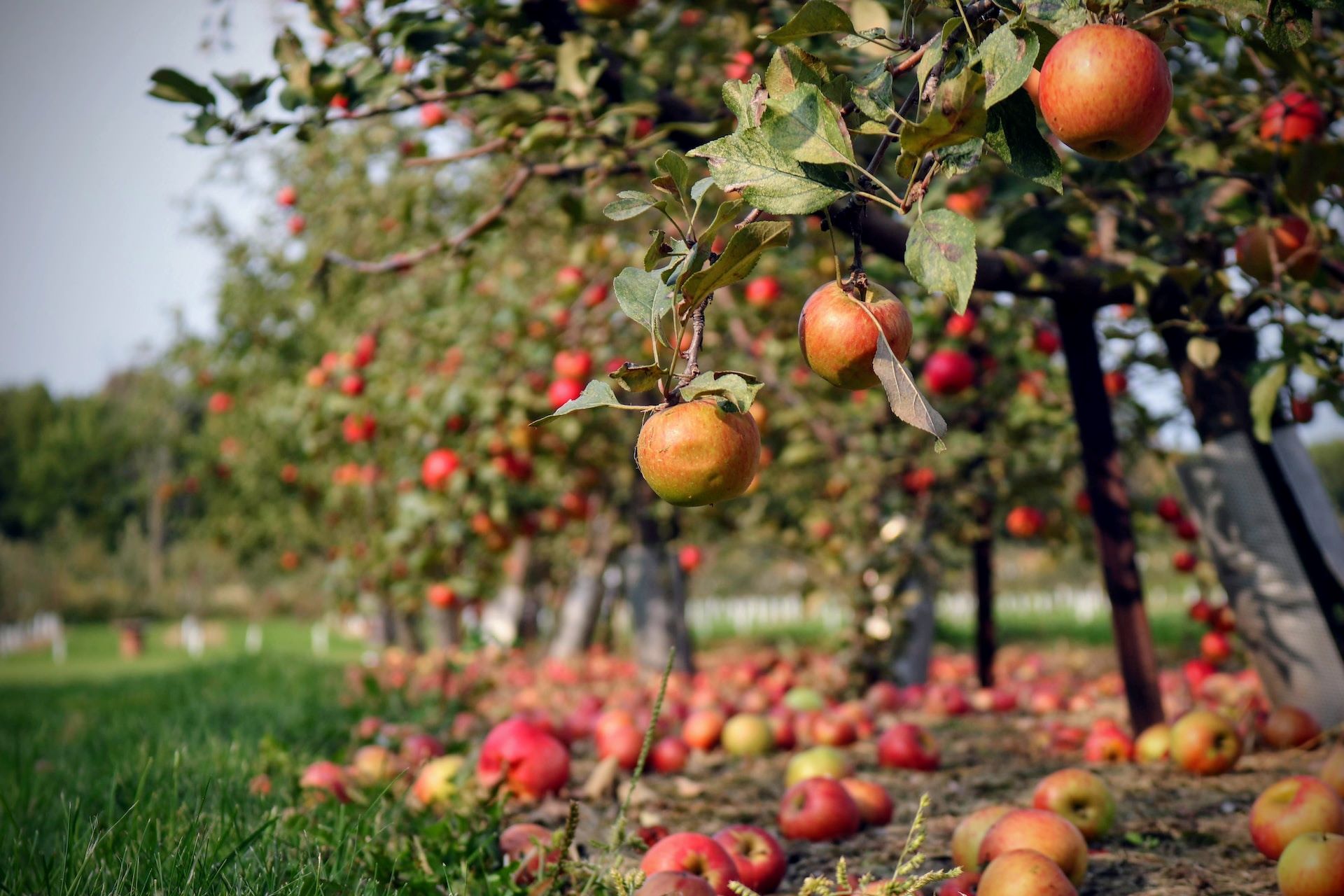Home>Gardening News and Trends>Latest News>Where Are Sequoia Trees
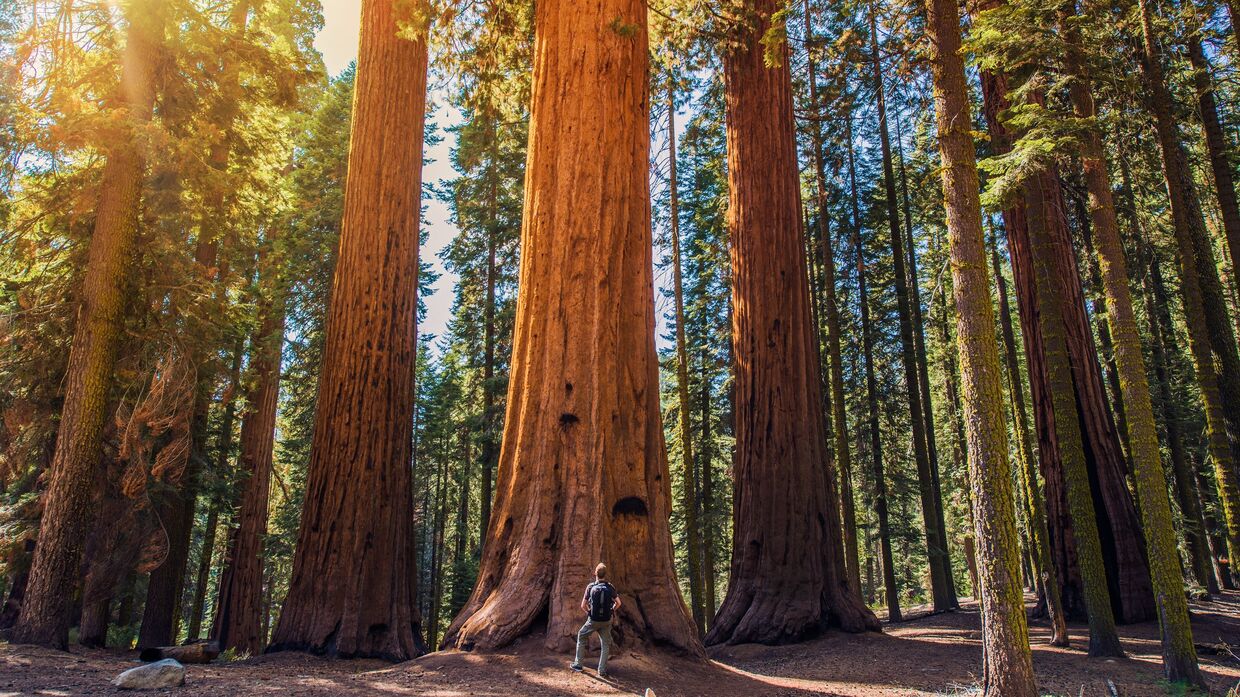

Latest News
Where Are Sequoia Trees
Modified: January 22, 2024
Discover the latest news on where to find sequoia trees and explore their majestic beauty. Plan your next adventure surrounded by these ancient giants.
(Many of the links in this article redirect to a specific reviewed product. Your purchase of these products through affiliate links helps to generate commission for Chicagolandgardening.com, at no extra cost. Learn more)
Table of Contents
Introduction
Welcome to the enchanting world of sequoia trees! These magnificent giants have captivated the imagination of nature enthusiasts and scientists alike for centuries. Standing tall and proud, sequoias are renowned for their impressive size, longevity, and unique characteristics. In this article, we will delve into the fascinating realm of sequoia trees, exploring their history, geographic distribution, conservation efforts, and much more.
Named after the Cherokee scholar, Sequoyah, the sequoia trees belong to the genus Sequoiadendron and are part of the cypress family. They have a rich and storied history dating back millions of years. These ancient trees have witnessed the rise and fall of civilizations and have stood resilient against the passage of time.
The geographic distribution of sequoia trees is limited to a specific region, primarily in North America. They are native to the western slopes of the Sierra Nevada mountain range in California. The dense forests where they thrive are a testament to the awe-inspiring beauty and biodiversity of the region.
One of the most renowned and accessible locations to witness the grandeur of sequoia trees is Sequoia National Park. This national park, nestled in the heart of the Sierra Nevada, is a sanctuary for these giants. The park not only offers breathtaking vistas but also plays a crucial role in conserving and protecting these ancient wonders.
Conservation efforts for sequoia trees have become increasingly important in recent years. Due to their vulnerability to climate change, wildfire, and human activities, sequoias require dedicated conservation measures to ensure their survival for future generations. Organizations and scientists are working tirelessly to understand and mitigate the threats facing these remarkable trees.
Sequoia trees possess distinct characteristics that set them apart from other tree species. Their colossal size, incredible longevity, and fire-resistant bark are just a few of the features that make them truly remarkable. These characteristics have allowed sequoia trees to adapt and thrive in their unique ecosystems.
Throughout history, humans have interacted with sequoia trees in various ways. Native American tribes revered these trees and incorporated them into their cultural practices. Additionally, the lumber industry has had a significant impact on the population of sequoias, leading to a greater focus on sustainable logging practices in recent times.
Join us on this journey as we explore the intriguing world of sequoia trees. From their ancient beginnings to the ongoing efforts to preserve them, these majestic giants continue to inspire and awe all who encounter them.
History of Sequoia Trees
The history of sequoia trees is a tale that spans millions of years and is filled with awe-inspiring stories. These ancient giants have survived through countless natural disasters, climate changes, and shifts in the Earth’s landscape. Let’s delve into their fascinating history and discover how they have become living witnesses to the passage of time.
The Sequoiadendron genus, which includes sequoia trees, has roots that date back to the Jurassic period, over 200 million years ago. However, the specific species we see today, the giant sequoia (Sequoiadendron giganteum), didn’t appear until around 10 to 15 million years ago during the Miocene epoch.
Sequoia trees have their origins in North America, specifically in the western part of the continent. They thrived in various regions, including what is now California, Oregon, and Nevada. Fossil records show that these majestic trees once covered vast areas, but their range has since diminished.
The history of human interaction with sequoias can be traced back to the Native American tribes of the region. For centuries, indigenous peoples such as the Miwok, Paiute, and Yosemite-Mono tribes lived amongst the sequoias, incorporating them into their spiritual practices and utilizing their resources for food, shelter, and tools. These tribes held great reverence for the trees, considering them sacred and essential to their way of life.
It wasn’t until the mid-19th century that sequoia trees gained attention from the wider world. In 1852, the discovery of the giant sequoia in the Calaveras Grove by Augustus T. Dowd sparked international interest. News of these colossal trees quickly spread, leading to tourists and scientists flocking to witness their magnificence.
The fame of these towering giants attracted both admiration and exploitation. The logging industry saw the immense value in the timber from sequoias, leading to large-scale logging operations in the late 19th and early 20th centuries. Thankfully, in 1890, President Benjamin Harrison designated the General Grant Grove as a national park, which later became part of Sequoia National Park. This was a crucial move in preserving the remaining sequoia groves.
Despite the conservation efforts, sequoia trees continue to face challenges today. Climate change, with its impact on forest ecosystems, poses a threat to the survival of these ancient trees. The increase in wildfires in recent years also risks the destruction of vital sequoia habitats.
The history of sequoia trees is a testament to their resilience and enduring spirit. These mighty giants have stood tall throughout the ages, weathering the test of time. As we continue our exploration of these fascinating trees, let us marvel at their remarkable history and appreciate the efforts taken to ensure their preservation for future generations.
Geographic Distribution of Sequoia Trees
The geographic distribution of sequoia trees is limited primarily to the western slopes of the Sierra Nevada mountain range in California, United States. These magnificent giants are localized to a specific region, creating unique and awe-inspiring forests that have captivated visitors for generations.
The majority of sequoia trees can be found within the boundaries of two national parks: Sequoia National Park and Kings Canyon National Park. Together, these parks create a protected sanctuary for the sequoias and provide visitors with the opportunity to witness their grandeur firsthand.
Sequoia National Park, established in 1890, is home to some of the most iconic groves of sequoia trees. The park covers a vast area of over 400,000 acres and offers spectacular mountain landscapes, picturesque meadows, and rushing rivers. It boasts notable groves such as the General Sherman Grove, which is where you can find the world’s largest tree by volume, the General Sherman Tree.
Kings Canyon National Park, established in 1940, encompasses a neighboring area to Sequoia National Park. While less renowned than its counterpart, it still contains impressive sequoia groves, including the famous Redwood Mountain Grove with its dense concentration of towering sequoias. The parks are adjacent to one another, allowing visitors to explore both and marvel at the natural splendor they offer.
Although sequoia trees have their stronghold in California, they can also be found in scattered locations outside of the national parks. For example, there are small groves and individual trees in the Sierra Nevada foothills, as well as in private lands and gardens elsewhere in California and even in other parts of the world as ornamental trees.
The distribution of sequoia trees is closely tied to specific environmental conditions. They thrive in the unique combination of factors found in the Sierra Nevada region, including a Mediterranean climate characterized by hot, dry summers and cool, wet winters. The moist soil, sunny exposure, and protection offered by the mountainous terrain create the ideal habitat for sequoia trees to flourish.
While the geographic distribution of sequoia trees may be limited, their impact on the landscape is immense. These towering giants dominate the forests they inhabit, creating a sense of awe and wonder for all who have the privilege of witnessing their majestic presence.
Next, we’ll explore the beauty and significance of Sequoia National Park, one of the prime destinations for experiencing the magnificence of sequoia trees.
Sequoia National Park
Sequoia National Park, located in the heart of the Sierra Nevada mountain range in California, is a treasure trove of natural wonders and home to some of the most magnificent sequoia trees on Earth. Spanning over 400,000 acres, this national park offers visitors a captivating and immersive experience amidst towering forests, rugged mountains, and breathtaking landscapes.
Established in 1890, Sequoia National Park holds the distinction of being the second oldest national park in the United States. Its primary purpose is to protect and preserve the groves of ancient sequoia trees that call this park their home.
One of the park’s most famous attractions is the General Sherman Tree, the largest tree in the world by volume. Standing at approximately 275 feet tall and with a circumference of over 100 feet, this awe-inspiring giant is a must-see for any visitor to Sequoia National Park. The General Sherman Tree is estimated to be around 2,200 years old, emphasizing the incredible longevity of these sequoias.
Sequoia National Park offers visitors a range of recreational activities for all ages and interests. Hiking is a popular pastime, with trails winding through the forests, leading to vistas that offer panoramic views of the surrounding mountains and valleys. The Congress Trail, for example, takes visitors on a journey through several groves, providing a close encounter with some of the park’s oldest and largest sequoia trees.
In addition to hiking, other activities such as camping, wildlife viewing, and photography are also popular within the park. The diverse ecosystem within Sequoia National Park is home to a variety of wildlife species, including black bears, mule deer, and golden eagles, providing ample opportunities for wildlife enthusiasts and nature photographers to capture the beauty of the natural world.
For those seeking a truly awe-inspiring experience, a visit to the Crystal Cave is highly recommended. Located in the southern part of the park, this stunning marble cavern offers guided tours where visitors can explore the intricate rock formations and marvel at the unique underground landscape.
Conservation is a key focus within Sequoia National Park. Efforts are continuously being made to protect the sequoia trees and their habitats from the threats posed by climate change, wildfires, and invasive species. Conservationists and park authorities work together to research, monitor, and implement strategies to ensure the long-term survival of these ancient giants.
No visit to Sequoia National Park is complete without taking a moment to reflect upon the sheer magnificence and grandeur of the sequoia trees. These ancient beings, rooted in the earth for millennia, inspire a sense of awe and reverence that can only be truly appreciated in person.
As we continue our exploration, let’s delve into the efforts to conserve and protect the sequoia trees that grace this remarkable national park.
Conservation of Sequoia Trees
The conservation of sequoia trees is of paramount importance to ensure the survival of these remarkable giants for future generations. As these ancient trees face increasing threats such as climate change, wildfires, and human activities, dedicated efforts are being made to protect and preserve their habitats and populations.
Conservation initiatives for sequoia trees involve a multi-faceted approach that includes scientific research, land management, and public education. Conservation organizations, national park authorities, and scientists work hand in hand to tackle the challenges and implement effective strategies.
One significant threat to sequoias is climate change, which can impact their ecology and overall health. Rising temperatures and changing precipitation patterns can alter the conditions necessary for the sequoias to thrive. To address this, research is being carried out to monitor the effects of climate change on the sequoia ecosystems and to identify measures to mitigate its impact.
Another critical aspect of sequoia tree conservation is managing and reducing the risk of wildfires. Although sequoias have evolved to withstand fire, the increasing intensity of wildfires in recent years has posed a significant challenge. Prescribed burns, a carefully controlled process of intentionally setting fires under controlled conditions, are conducted to mimic the natural fire regimes that sequoias have adapted to over millennia. These burns help reduce the build-up of flammable materials and promote the health of the sequoia forests.
Protecting the natural habitats of sequoia trees is vital for their conservation. Efforts are underway to identify and acquire critical lands surrounding sequoia groves to prevent development and provide a buffer zone. This not only ensures the integrity of these ecosystems but also helps maintain proper airflow, reduce the risk of disease transmission, and preserve the overall biodiversity of the surrounding areas.
Additionally, public education and awareness play a crucial role in sequoia tree conservation. National parks, conservation organizations, and research institutions actively engage with the public to educate them about the significance of sequoias and the importance of preserving their habitats. By fostering a sense of appreciation and stewardship, individuals are encouraged to support conservation efforts and make sustainable choices in their daily lives.
Collaboration between various organizations and stakeholders is key to the success of sequoia tree conservation. Partnerships are formed to pool resources, share knowledge, and implement effective management strategies. Additionally, ongoing monitoring and research initiatives provide valuable insights into the health and status of sequoia populations, enabling conservationists to adapt their approaches and make informed decisions.
The conservation of sequoia trees is a long-term commitment that requires sustained effort and dedicated resources. By recognizing the ecological, cultural, and historical significance of these ancient giants, we can work together to ensure their survival and safeguard the awe-inspiring beauty they bring to our natural landscapes.
Next, let’s delve into the unique characteristics that make sequoia trees truly remarkable.
Unique Characteristics of Sequoia Trees
Sequoia trees possess a range of unique characteristics that set them apart from other tree species. These awe-inspiring giants have captivated the imagination of people for generations with their remarkable size, incredible longevity, and adaptability. Let’s explore some of the distinctive traits that make sequoias truly remarkable.
Size is perhaps the most striking characteristic of sequoia trees. They are among the largest living organisms on Earth, with majestic trunks that can reach diameters of over 25 feet and heights surpassing 250 feet. The General Sherman Tree in Sequoia National Park, for example, is estimated to be around 2,200 years old and is known as the largest tree on Earth by volume.
Sequoias have an astonishing lifespan, with some living for thousands of years. Their remarkable longevity is attributed to their ability to resist diseases, pests, and even fire. Sequoias have a thick, fire-resistant bark that protects them during wildfires, allowing them to survive and continue growing.
Another intriguing characteristic of sequoia trees is their impressive ability to regenerate. They have the remarkable capacity to sprout new growth from their massive trunks, even when they have been severely damaged or burned. This regeneration ability ensures the survival of these ancient giants, allowing them to persist for millennia.
Adaptability is another fascinating aspect of sequoia tree characteristics. These trees have uniquely evolved to thrive in the Sierra Nevada region’s specific environmental conditions. They are well-suited to the Mediterranean climate of hot, dry summers and cool, wet winters, relying on the seasonal rainfall and snowmelt to sustain them through the dry summer months.
Sequoia trees also have a distinctive role in shaping their ecosystems. Their thick canopies provide shade and shelter for a diverse array of plant and animal species. The fallen logs and decaying wood of sequoias create nutrient-rich habitats, supporting the growth of ferns, mushrooms, and other organisms that contribute to the forest’s biodiversity.
One other intriguing characteristic of sequoias is their ability to absorb and store large amounts of carbon dioxide, playing a significant role in mitigating climate change. As these trees grow, they capture and store carbon in their massive trunks, aiding in the regulation of atmospheric carbon levels and helping to reduce the impacts of greenhouse gases on the planet.
The unique characteristics of sequoia trees have made them objects of fascination and inspiration for humans throughout history. Their sheer size, longevity, adaptability, and contribution to the environment make them invaluable treasures that deserve our utmost respect and protection.
As we continue our exploration, let’s delve into the various ways in which humans have interacted with sequoia trees throughout time.
Human Interactions with Sequoia Trees
Throughout history, humans have had various interactions with sequoia trees, ranging from reverence and spiritual significance to exploitation and conservation efforts. These ancient giants hold a special place in the cultural and historical narratives of both indigenous communities and the wider world. Let’s explore the multifaceted nature of human-sequoia tree interactions and the impact they have had over time.
For indigenous Native American tribes of the region, sequoia trees held great symbolic and spiritual significance. Native communities such as the Miwok, Paiute, and Yosemite-Mono tribes lived amongst the sequoias, considering them sacred and integral to their cultural practices. These tribes recognized the strength, resilience, and longevity of the sequoias, incorporating them into ceremonies, storytelling, and medicinal practices.
The arrival of European settlers brought about a new chapter in the human-sequoia tree relationship. In the mid-19th century, the discovery of the giant sequoias in the Calaveras Grove by Augustus T. Dowd created a sensation and attracted tourists from around the world. People flocked to witness the awe-inspiring grandeur of these towering giants, sparking a newfound appreciation for the natural wonders of California.
However, with the increasing interest in the timber industry, the sequoia trees faced exploitation and deforestation in the late 19th and early 20th centuries. Logging operations began harvesting these valuable resources, putting several groves at risk. Recognizing the need for conservation, President Benjamin Harrison designated the General Grant Grove as a national park in 1890, providing a level of protection and preservation for sequoia trees. This marked the beginning of efforts to safeguard these ancient giants for future generations.
Today, the conservation of sequoia trees remains a priority. National parks and conservation organizations work tirelessly to protect and preserve the sequoia groves, while also educating the public about their significance. Sustainable logging practices have replaced the rampant exploitation of the past, allowing for the limited use of sequoia timber in a manner that promotes the long-term health of the trees and their ecosystems.
Human-sequoia interactions extend beyond conservation and preservation efforts. Sequoia National Park and Kings Canyon National Park attract millions of visitors each year, providing opportunities to connect with and be inspired by these majestic trees. Visitors can hike through ancient groves, stand in awe beneath towering trunks, and witness the natural wonders of the sequoia forest ecosystem.
The cultural and historical significance of sequoia trees continues to be celebrated. Artistic representations, literature, and photography capture the essence and beauty of these remarkable giants, contributing to the broader appreciation and understanding of their importance. Sequoias have become iconic symbols of endurance, resilience, and the enduring spirit of the natural world.
The ongoing human-sequoia relationship serves as a reminder of our responsibility to coexist with and protect these ancient giants. By fostering a sense of respect, admiration, and stewardship, we can ensure that future generations have the opportunity to marvel at the majestic presence of sequoia trees and be inspired by their significance in our world.
As we wrap up our exploration, let us reflect on the incredible journey we have taken to discover the history, distribution, conservation, unique characteristics, and human interactions connected to these extraordinary sequoia trees.
Conclusion
The world of sequoia trees is a captivating and awe-inspiring realm, filled with rich history, unique characteristics, and deep connections to both the natural world and human civilization. These ancient giants, with their immense size, incredible longevity, and adaptability, have left an indelible mark on the landscapes they inhabit and the people who encounter them.
From their origins in the Jurassic period to their current distribution in the western slopes of the Sierra Nevada in California, sequoia trees have stood as witnesses to the passage of time and the ever-changing world around them. They have been revered by indigenous tribes for their spiritual significance and have fascinated visitors from all corners of the globe.
Sequoia National Park, established as a sanctuary for these majestic giants, offers a stunning backdrop for experiencing the grandeur of sequoias. The park’s expansive landscapes, towering forests, and iconic groves, such as the General Sherman Tree, provide a remarkable setting to connect with nature and witness these ancient beings up close.
Conservation efforts play a crucial role in safeguarding the future of sequoia trees. Scientists, park authorities, and conservation organizations work tirelessly to protect their habitats, mitigate the effects of climate change, and raise awareness about the importance of preserving these natural wonders. Through education and sustainable practices, the hope is to ensure that sequoias continue to inspire generations to come.
The unique characteristics of sequoia trees, including their colossal size, fire-resistant bark, and regenerative abilities, make them truly remarkable and worthy of admiration. Their presence in the Sierra Nevada forests contributes to the overall health and diversity of the ecosystem, while also capturing and storing carbon, aiding in the fight against climate change.
Throughout history, humans have interacted with sequoia trees in various ways, from their sacred significance to indigenous tribes to the exploitation and subsequent conservation efforts by settlers and organizations. The human-sequoia relationship highlights the need for responsible stewardship and appreciation of the natural world.
In conclusion, the world of sequoia trees is filled with wonder, beauty, and conservation challenges. These ancient giants continue to remind us of our connection to the natural world and the importance of preserving our planet’s extraordinary treasures. Let us continue to explore, protect, and celebrate these magnificent sequoia trees for the generations yet to come.
